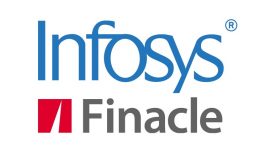Overcoming challenges on the road to open banking success
Banks of all sizes are facing challenges when it comes to adopting new open banking standards, as they seek a way to grasp the benefits available with flexible infrastructure.
Although a majority of the industry is waking up to the potential that open banking and application programming interfaces (APIs) have, worries still exist when it comes to integrating with legacy technology, changing corporate culture and finding the right talent.

FinTech Futures speaks to Rajashekara V. Maiya at Infosys Finacle about open banking.
Rajashekara V. Maiya, vice president and global head of business consulting at Infosys Finacle, says that the hurdles banks face can vary depending on readiness and on the size of their balance sheet.
“Large banks generally have challenges when it comes to integration,” he says. “If you demystify open banking and look under the hood it comes down to exposing certain APIs and certain sets of data in a limited manner.”
The new standards are also asking firms to build a new infrastructure, adds Maiya. All of this brings threats in terms of opening systems and databases inside the bank that have been nothing if not confidential for a long time.
Integration issues
In many cases system integration issues cannot be easily solved when considering a large bank’s core platforms. Another constraint on the larger banks is time. Maiya says that the Tier One institutions are used to budgeting time to projects that can last five or six years.
“That is not the expectation with open banking,” he adds. “Regulators and customers are expecting this to be done much faster, and COVID-19 has accelerated that need by at least 12-24 months.”
While medium-sized and small banks may not have a sprawl of legacy technology to navigate or integrate with, they have challenges in terms of access to a proper ecosystem.
“Most fintech ecosystems will be looking towards the larger banks,” says Maiya. “Smaller banks also run into issues when it comes to attracting the best talent from an IT perspective.”
Costs come into play with smaller banks as well. Maiya adds that while less capitalised banks have lower spend on technology, they equally have a smaller budget available to undertake technology transformations.
Options for change

Rajashekhara V Maiya, Infosys Finacle
Despite the challenges, banks have several options available to them to ensure that they can be grab the opportunities available through open banking.
“What we look at first and foremost is the position of the API, in terms of its usage,” says Maiya. “It has to be functional; it has to be business worthy. Also, it cannot just be a technical thing. The second thing to focus on is a proper content management system so that the customer can view the data as well as the regulator.
“The third most important thing is to create a comprehensive fintech ecosystem, because you will not be able to go it alone. Fintechs have creative offerings and can save plenty of time by spinning up services much faster. Banks should not look to compete with them but instead onboard successful start-ups.”
Maiya says that talent is also critical to properly engaging with open banking. “There should be an API product manager; an open banking analyst who understands your business context; you need an evangelist who can bridge the gap between external and internal perspective.
“You need an open banking architect, and you must have an API developer or team, who understands what fields to expose and how to make things readily available.” Open banking will hit the entire organisation, concludes Maiya, and proactivity across a bank’s infrastructure will separate the successes from the failures.
SPONSORED INSIGHTS
For more visit: https://www.edgeverve.com/finacle/












































